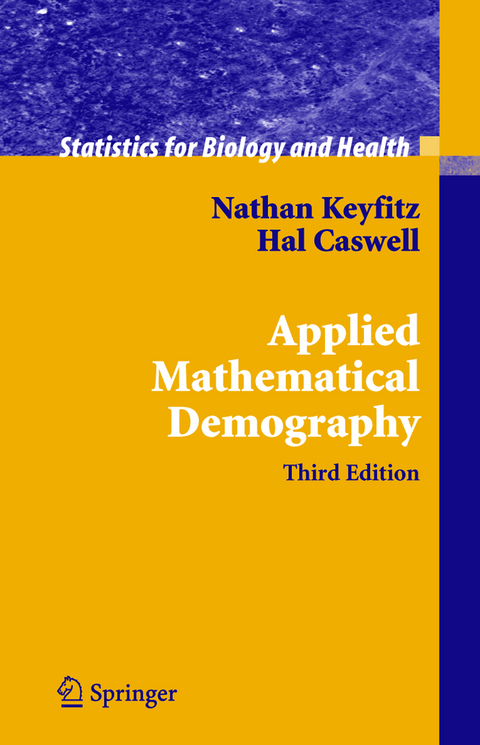
Applied Mathematical Demography
Springer-Verlag New York Inc.
978-0-387-22537-1 (ISBN)
ButIacceptedtheinvitation.Key?tz'ssuggestionthatweincorporatesome of my earlier work on matrix population models seemed like a good way to complement the methods presented in the book, and to expand the range of their applications. I am a demographer of plants and nonhuman animals. Some would call this an oxymoron, since the Greek rootdemos refers to people, and that's us. But there are precedents for taking more inclusive de?nitions of the Greek.Ecologyandeconomics,forexample,bothcomefromtherootoikos, referring to the household. Interpretingdemos as referring to individuals, whether they are persons or not, lets demography apply across species. There is a long tradition of such crossover. Alfred J. Lotka is acknowledged as a founding father of both demography and ecology. Raymond Pearl used demographic methods to analyze the e?ects of toxic substances and cro- ing on fruit ?ies. Lee (1987) compared the density-dependence of the vital rates of human and non-human animals. Today, in studies of senescence, reproduction, and individual heterogeneity, the boundaries between animal and human studies are becoming increasingly blurred (Wachter et al.
1997, Carey 2003, Wachter and Bulatao 2003, Carey and Tuljapurkar 2003).
Introduction: Population Without Age.- The Life Table.- The Matrix Model Framework.- Mortality Comparisons; The Male-Female Ratio.- Fixed Regime of Mortality and Fertility: The Uses of Stable Theory.- Birth and Population Increase from the Life Table.- Birth and Population Increase from Matrix Population Models.- Reproductive Value from the Life Table.- Reproductive Value from Matrix Models.- Understanding Population Characteristics.- Markov Chains for Individual Life Histories.- Projection and Forecasting.- Perturbation Analysis of Matrix Models.- Some Types of Instability.- The Demographic Theory of Kinship.- Microdemography.- The Multi-State Model.- Family Demography.- Heterogeneity and Selection in Population Analysis.- Epilogue: How Do We Know the Facts of Demography?.
| Reihe/Serie | Statistics for Biology and Health |
|---|---|
| Zusatzinfo | 74 Illustrations, black and white; XXVI, 558 p. 74 illus. |
| Verlagsort | New York, NY |
| Sprache | englisch |
| Maße | 155 x 235 mm |
| Themenwelt | Mathematik / Informatik ► Mathematik ► Wahrscheinlichkeit / Kombinatorik |
| Naturwissenschaften ► Biologie ► Botanik | |
| Naturwissenschaften ► Biologie ► Zoologie | |
| Sozialwissenschaften ► Soziologie ► Empirische Sozialforschung | |
| Sozialwissenschaften ► Soziologie ► Spezielle Soziologien | |
| ISBN-10 | 0-387-22537-4 / 0387225374 |
| ISBN-13 | 978-0-387-22537-1 / 9780387225371 |
| Zustand | Neuware |
| Haben Sie eine Frage zum Produkt? |
aus dem Bereich


